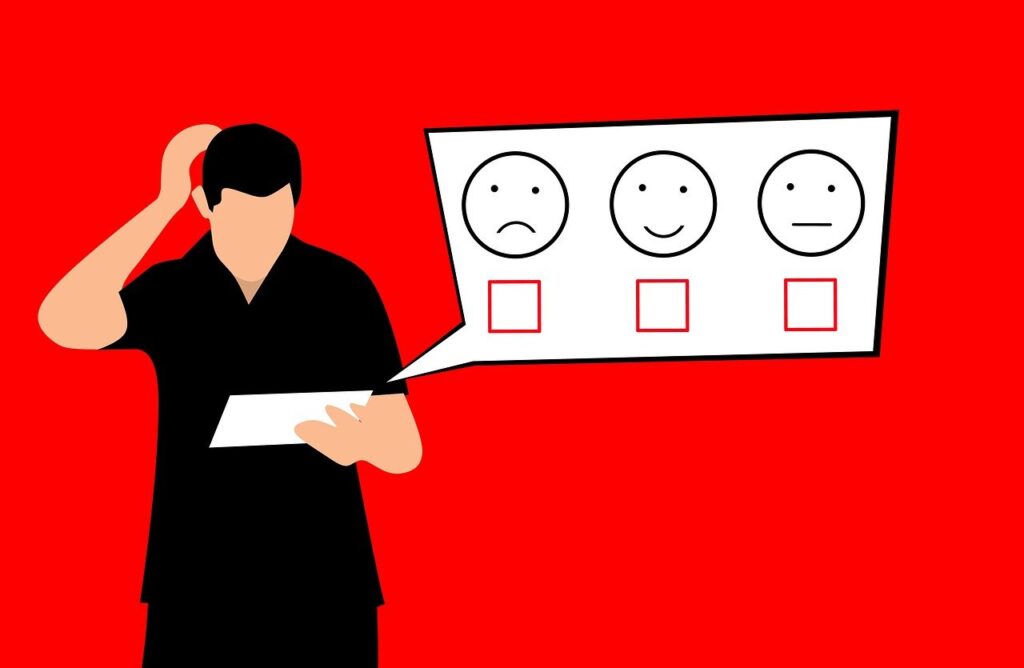In this comprehensive guide, you will discover essential strategies and insightful tips to effectively manage and enhance your brand reputation. We all know that maintaining a positive brand image is crucial for long-term success, but how exactly can you achieve this? From online reputation management to building strong customer relationships, this article will equip you with the knowledge and tools needed to elevate your brand reputation to new heights. So, whether you are a small business owner or a seasoned marketer, get ready to take control of your brand narrative and attract more loyal customers than ever before.

1. Understanding Brand Reputation
In today’s competitive business landscape, brand reputation plays a crucial role in the success and longevity of any organization. The reputation of your brand can determine how consumers perceive your products or services, influence their decision-making process, and ultimately impact your bottom line. Understanding the importance of brand reputation is the first step in effectively managing and improving it.
1.1 The Importance of Brand Reputation
Your brand reputation is essentially the perception and opinion that customers, stakeholders, and the public have of your brand. It is built over time through a combination of factors such as the quality of your products or services, customer experiences, corporate social responsibility, and public relations efforts. A positive brand reputation can do wonders for your business, including attracting new customers, fostering loyalty, and enhancing your competitive advantage. On the other hand, a negative reputation can lead to customer distrust, loss of sales, and damage to your brand’s value.
1.2 What is Brand Reputation?
Brand reputation encompasses the overall image, credibility, and trustworthiness associated with a brand. It is the collective result of various interactions and experiences that customers and stakeholders have with your brand. This includes both offline and online interactions, such as word-of-mouth recommendations, customer reviews, media coverage, and social media mentions. Brand reputation is not something that can be measured by one single metric or controlled entirely by the brand itself. It is shaped by the perceptions and opinions of others which makes it crucial for businesses to actively manage and influence their brand reputation.
1.3 Building and Maintaining a Positive Brand Image
Building and maintaining a positive brand image requires strategic planning, consistency, and effective communication. It involves consistently delivering on the promises made to customers, providing exceptional customer service, and being transparent and ethical in all business operations. To build a positive brand reputation, you need to understand your target audience, their needs, and preferences, and align your brand messaging and values accordingly. Building strong relationships with your customers and stakeholders is key to gaining their trust and loyalty, which in turn will contribute to a positive brand image.
2. Monitoring Brand Reputation Online
In today’s digital age, monitoring your brand reputation online is essential. With the widespread use of social media platforms, online customer reviews, and forums, what customers are saying about your brand has a significant impact on your reputation. By using various monitoring tools and techniques, you can gain insights into customer sentiments, identify potential issues, and proactively address them before they escalate.
2.1 Utilizing Social Listening Tools
Social listening tools are a valuable resource for monitoring brand mentions and conversations happening on social media platforms. These tools allow you to track keywords, hashtags, and even competitors to gain a comprehensive understanding of how your brand is perceived online. By monitoring social media conversations, you can identify trends, provide timely responses to customer inquiries or complaints, and identify opportunities for engagement and relationship-building.
2.2 Tracking Online Mentions
Tracking online mentions involves monitoring not only social media channels but also other online platforms such as review sites, forums, and blogs. This allows you to keep track of what customers are saying about your brand, both positive and negative. By actively monitoring these mentions, you can respond to customer feedback, address concerns, and resolve any issues promptly. Additionally, tracking online mentions enables you to identify influencers and brand advocates who are passionate about your products or services and can help amplify your positive reputation.
2.3 Analyzing Customer Feedback and Reviews
Customer feedback and reviews are a goldmine of insights into your brand reputation. By analyzing both positive and negative feedback, you can identify areas of improvement, refine your products or services, and enhance the overall customer experience. Look for recurring themes, patterns, and sentiments in customer feedback to gain a deeper understanding of how your brand is perceived. This information can inform strategic decisions, product development, and communication strategies that contribute to a favorable brand reputation.

3. Responding to Online Feedback
Online feedback, whether positive or negative, requires careful and timely responses. How you handle online feedback can significantly impact your brand reputation. It’s essential to develop a crisis communication plan, address negative reviews and comments effectively, engage with positive feedback, and handle trolls and online attacks strategically.
3.1 Developing a Crisis Communication Plan
A crisis communication plan is a proactive strategy to address potential reputation crises effectively. This plan should outline key stakeholders, designated spokespersons, communication channels, and protocols for different types of crises. By having a well-defined and practiced crisis communication plan in place, you can respond swiftly and confidently during challenging times, minimizing the potential damage to your brand reputation.
3.2 Addressing Negative Reviews and Comments
Negative reviews and comments can be detrimental to your brand reputation if left unaddressed. It’s crucial to respond promptly and empathetically to negative feedback, acknowledging the concerns and offering solutions. By showing genuine concern and a willingness to rectify any issues, you can potentially turn a dissatisfied customer into a loyal advocate. Additionally, addressing negative feedback publicly demonstrates to other customers and potential prospects that you value their opinions and are committed to providing a positive customer experience.
3.3 Engaging with Positive Feedback
Positive feedback from customers is an excellent opportunity to reinforce your brand reputation. Take the time to respond to positive reviews, thanking customers for their support and expressing your appreciation. This engagement not only strengthens your relationship with existing customers but also showcases your brand’s commitment to customer satisfaction. Furthermore, by engaging with positive feedback, you encourage and incentivize customers to share their positive experiences with others, further enhancing your brand reputation.
3.4 Dealing with Trolls and Online Attacks
In today’s digital landscape, trolls and online attacks are unfortunately becoming more prevalent. These individuals aim to provoke negative reactions and damage a brand’s reputation. When faced with trolls or online attacks, it’s important to address these situations in a measured and professional manner. Avoid engaging in heated arguments or responding with defensive tones. Instead, focus on providing accurate information, addressing any legitimate concerns, and demonstrating that your brand remains committed to its values and customer satisfaction.

4. Managing Social Media Presence
Social media has transformed the way brands interact with their audience. Effectively managing your social media presence is paramount to building a positive brand reputation, engaging with your customers, and amplifying your brand’s reach.
4.1 Establishing a Consistent Tone and Voice
Consistency in your brand’s tone and voice across social media platforms is essential. Decide on the personality and language that aligns with your brand’s values and target audience. This consistent tone and voice will help build brand recognition and create a sense of authenticity that resonates with your followers.
4.2 Creating Engaging and Relevant Content
To maintain an active and engaging social media presence, it’s essential to create content that is not only relevant to your audience but also valuable and shareable. Understand the interests and preferences of your target audience and tailor your content accordingly. Incorporate visual elements, such as images and videos, as they tend to generate higher engagement rates. Encourage user-generated content, as it not only fosters a sense of community but also provides social proof of your brand’s value.
4.3 Building and Nurturing an Online Community
Building an online community around your brand is a powerful way to strengthen your brand reputation. Create a space where customers and followers can engage with your brand and with each other. This can be through social media groups, forums, or even virtual events. Encourage conversations, provide valuable insights and support, and foster a sense of belonging. By nurturing an online community, you create a loyal customer base that becomes brand advocates, further enhancing your brand reputation.
4.4 Handling Social Media PR Crises
Social media crises can arise unexpectedly and, if not managed properly, can severely damage your brand reputation. It’s crucial to have a plan in place to mitigate and respond to potential crises effectively. Establish clear protocols for identifying and responding to crisis situations, including designated spokespersons, response templates, and a communication strategy. Act quickly, transparently, and empathetically to address the crisis at hand, taking responsibility for any mistakes, while emphasizing your commitment to rectifying the situation and preventing similar issues in the future.

5. Influencer Marketing and Brand Reputation
Influencer marketing has become an integral part of brand reputation management. Collaborating with influencers can help amplify your brand’s reach, enhance credibility, and engage with new audiences. However, it’s important to approach influencer partnerships strategically to ensure alignment with your brand’s values and maintain authenticity.
5.1 Identifying and Collaborating with Influencers
Research and identify influencers within your industry or niche who align with your brand’s values and target audience. Look for influencers whose content, values, and engagement reflect positively on their personal brand reputation. Reach out to them with a personalized approach, expressing your interest in a potential collaboration and how it aligns with their content and audience. Collaborating with the right influencers can significantly contribute to building a positive brand reputation.
5.2 Leveraging Influencer Partnerships
When collaborating with influencers, it’s important to foster authentic relationships and empower influencers to genuinely represent your brand. Provide influencers with the necessary information and resources to accurately and effectively promote your products or services. Encourage them to share their honest experiences and opinions, as this transparency will help build trust and credibility among their followers. By leveraging influencer partnerships, you can tap into their audience’s trust and expand your brand’s reputation beyond your existing customer base.
5.3 Overcoming Challenges in Influencer Marketing
While influencer marketing can be highly beneficial for brand reputation management, it also presents challenges. It’s crucial to vet influencers thoroughly, ensuring their values align with your brand’s and that their audience demographics match your target market. Additionally, clearly communicate your expectations and guidelines to influencers to ensure consistent messaging and brand representation. Lastly, continuously monitor partnerships to ensure the ongoing reputation alignment and identify any potential risks to your brand reputation promptly.
Remember, building a positive brand reputation is not a one-time effort but rather an ongoing commitment. By continuously monitoring your brand reputation, responding to feedback effectively, engaging with your audience authentically, and leveraging strategic partnerships, you can manage and improve your brand reputation for long-term success.












